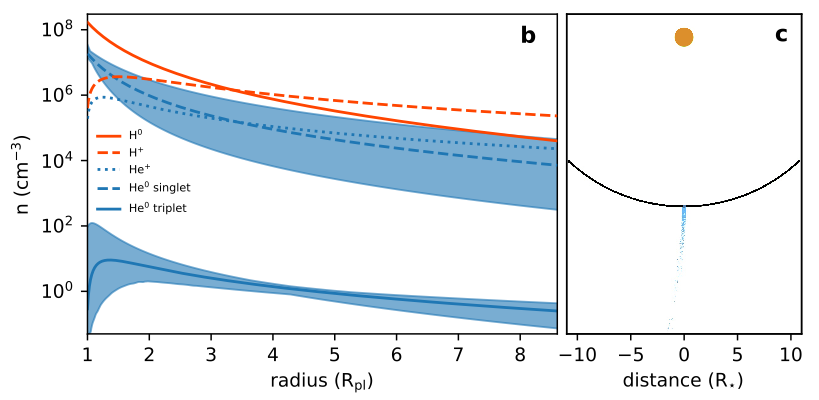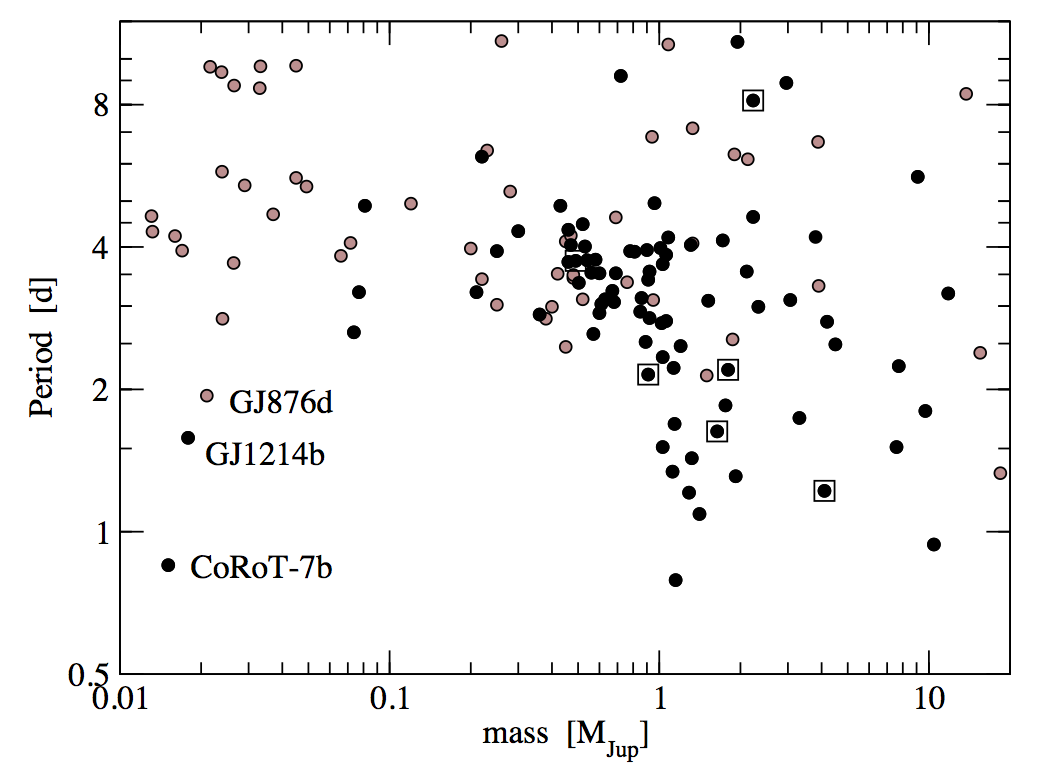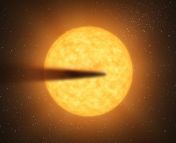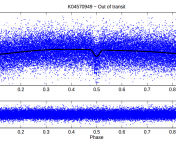Title: Helium in the Eroding Atmosphere of an Exoplanet
Authors: J. J. Spake, D. K. Sing, T. M. Evans, et al.
First Author’s Institution: University of Exeter
Status: Published in Nature [closed access] (open access on arxiv here)
Hydrogen and helium are the two most abundant elements in our Solar System (and the Universe as a whole). They are the main constituents in our Sun and in the atmospheres of our gas giants. Even Earth has some minor amount of helium in its upper atmosphere. Because these elements are so common, we also expect gas giant exoplanets to have large abundances of hydrogen and helium in their atmospheres. In fact, in 2000, Seager and Sasselov predicted that we should be able to observe helium and other atoms in the atmospheres of these planets in the near-future.
While we have directly detected hydrogen in the atmospheres of a handful of exoplanets, helium continues to remain elusive. This isn’t to say that these exoplanets aren’t composed of helium, helium is simply difficult to detect. As a noble gas, helium is hard to excite to different atomic energy levels, which is required for emission or absorption to occur. Even then, helium has only a few spectral lines we can observe. Furthermore, if the gas is diffuse (low-density), the signal might not be strong enough for us to observe, even if absorption/emission is occuring. Because of these difficulties we require two conditions for a helium detection:
- A planet must receive a large amount of energetic ultraviolet (UV) photons from its star in order to populate the excited levels in a helium atom.
- A planet must also have a large quantity of helium high up in its atmosphere where it can both interact with these photons, and be in a region of the atmosphere that is transparent. An opaque atmosphere would block any helium signal from reaching us.
Multiple exoplanets meet the above criteria, and yet, no helium has yet been detected — until Wasp-107b came along. Eighteen years after helium was first predicted in the atmospheres of exoplanets, the authors of today’s paper were finally able to make the first helium detection in the atmosphere of an exoplanet!
Wasp-107b: The Perfect Target
Wasp-107b is a highly-inflated hot Jupiter with a radius similar to Jupiter but only with 12% the mass of Jupiter. It orbits a very active star once every 5.7 days, putting it up close and right in the path of a large number of UV photons. Wasp-107b just needed a significant quantity of helium in its extended atmosphere to make it the perfect target.
The authors used transmission spectroscopy, a method detailed in this Astrobite, taken by the Hubble Space Telescope to make this detection. Figure 1 plots the transmission spectrum of this planet, which also contains broad water absorption features. However, around a wavelength of 10830 angstroms, there is a narrow peak corresponding to helium high in the atmosphere. Using atmospheric models, the authors determined that the water absorption is occuring at pressure levels of several millibars ( bars). The helium absorption, on the other hand, occurs at pressures around 1 nano bar (
bars)! (For reference, the pressure of Earth’s stratosphere is around 1 millibar).

Figure 1: Transmission spectrum of Wasp-107b. Teal points were points the authors observed, while black points are points from a separate paper, Kreidberg et al. 2018 which observed different wavelengths of Wasp-107b’s atmosphere. The red line is a model assuming absorption features are due to water. The bright blue point with the gold line represents the helium detection and subsequent model of the line. This model occurs at a much higher relative altitude than the water features illustrating that there is helium above the water layer in the atmosphere. (Figure 1 in the paper)
What Can Helium Tell Us About Wasp-107b’s Atmosphere?
From their models, the authors also discovered that at these low pressures, not only is helium being excited by the stellar photons, it is also being stripped away from the planet. Wasp-107b is losing its atmosphere at a rate of 0.1-4% of its total mass every billion years. The helium itself is being swept away at speeds of over a hundred km/s. At these speeds, Wasp-107b doesn’t have a chance at developing a spiraling comet-like tail, similar to what we’ve seen around other planets. Instead, as shown in Figure 2, the helium is being blown directly away from the planet.

Figure 2: Inputs for the helium model shown in gold in Figure 1. On the left shows the number density of helium in different states (blue lines). The singlet state of helium is the lowest state, while the excited state in this model is the helium triplet. The authors also included ionized helium, a state which occurs if the helium loses electrons. These densities span several orders of magnitude even out to distances of over 8 planetary radii. The density of the singlet state decreases faster as it is constantly being converted to the triplet state from the ionized state. The right panel illustrates the helium “tail” of Wasp-107b in blue as the planet orbits its star. Instead of a spiraling tail that moves along with the orbit, this tail is blown completely backwards off the planet. (Figure 4 in the paper)
Will Wasp-107b one day no longer have an atmosphere and instead be a barren rocky core orbiting a star? Future models and higher resolution observations are required to answer this question. But with this helium detection, the authors have laid the foundation for a new tool in observing the upper atmospheres of exoplanets. With the potential to make multiple helium detections, either with our current high-resolution instruments on the ground, HST, or the upcoming James Webb Space Telescope (JWST), we are positioned to explore new regions of exoplanet atmospheres and better understand the escape processes that govern hot planets.





Trackbacks/Pingbacks